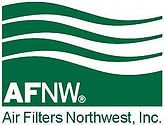Introduction
Professional ventilation system inspections are a crucial component of building maintenance that directly impacts occupant health, energy efficiency, and system longevity. As buildings become more complex and indoor air quality standards more stringent, these inspections have evolved from simple visual checks to comprehensive evaluations using advanced diagnostic tools. Whether you manage a commercial building, healthcare facility, or industrial complex, understanding what to expect during ventilation system inspections will help you prepare effectively and maximize the value of this essential service.
Pre-Inspection Phase
Before the actual inspection begins, several preparatory steps ensure a smooth and effective process. The inspection team will need access to system documentation, including previous maintenance records, floor plans, and any recent modifications to the ventilation system. Building managers should coordinate with tenants and staff to ensure proper access to all areas requiring inspection, while also reviewing safety protocols and identifying any potential hazards that inspectors should be aware of during their assessment.
The Inspection Process
Visual Inspection
Professional ventilation system inspections begin with a thorough visual examination of all accessible components. Inspectors will examine exterior components, access points, and visible ductwork for signs of damage, deterioration, or improper installation. This initial assessment often reveals immediate concerns such as loose connections, damaged insulation, or visible contamination that could affect system performance and indoor air quality.
System Performance Testing
During performance testing, inspectors use specialized equipment to measure various parameters that indicate system health. Key measurements include airflow rates at different points in the system, static pressure readings, and temperature differentials across equipment. These quantitative assessments help identify issues that may not be visible to the naked eye, such as inadequate air distribution or equipment operating outside optimal parameters.
Indoor Air Quality Assessment
A comprehensive evaluation of indoor air quality is essential for ensuring occupant health and comfort. Inspectors conduct various tests to measure contaminant levels, particle counts, and other air quality indicators that might suggest ventilation problems. This phase of ventilation system inspections often includes CO2 monitoring, which can indicate whether fresh air exchange rates are sufficient for the occupancy levels.
Advanced Diagnostic Methods
Modern ventilation system inspections employ sophisticated diagnostic tools to provide detailed insights into system condition and performance. Video inspection technology allows for examination of otherwise inaccessible areas, while thermal imaging can reveal issues with insulation or air leakage. Advanced testing methods like ultrasonic leak detection help identify energy-wasting gaps that might be missed during conventional inspections.
Common Issues Discovered During Inspections
Regular ventilation system inspections frequently uncover issues that could impact system performance and efficiency. Common findings include blocked or damaged ductwork, worn-out components, and improper system balance that affects air distribution. Early detection of these issues through professional inspections can prevent more serious problems and costly repairs down the line.
Documentation and Reporting
Professional inspection reports provide a detailed record of findings, including photographic evidence, test results, and specific recommendations. These documents serve as valuable references for maintenance planning and compliance verification. A thorough report should prioritize recommended actions based on urgency and potential impact on system performance, helping facility managers make informed decisions about maintenance and upgrades.
Post-Inspection Actions
After receiving the inspection report, facility managers should develop an action plan to address any identified issues. This plan should consider both immediate concerns that require urgent attention and longer-term improvements that can be budgeted for future implementation. Understanding and properly prioritizing these recommendations ensures that resources are allocated effectively to maintain optimal system performance.
Compliance and Standards
Industry regulations and standards play a crucial role in defining the scope and frequency of ventilation system inspections. Organizations like ASHRAE and NADCA provide detailed guidelines for inspection procedures and acceptable system conditions. Compliance with these standards not only ensures system performance but also helps protect building owners from liability related to indoor air quality issues.
Cost Considerations
While professional ventilation system inspections represent an investment, they typically provide significant returns through improved efficiency and reduced maintenance costs. Regular inspections help identify energy-wasting issues and prevent major system failures that could result in expensive emergency repairs. The cost of inspections varies based on system size, complexity, and the level of testing required.
Maintaining Your System Between Inspections
Regular maintenance between professional inspections helps maintain system performance and extend equipment life. Building staff should be trained to recognize warning signs that might indicate developing problems, such as unusual noises, odors, or changes in airflow. Keeping detailed maintenance records helps track system performance trends and provides valuable information for future inspections.
Special Considerations
Different facilities may require specialized inspection protocols based on their specific needs and regulatory requirements. Healthcare facilities, for example, must meet stringent air quality standards and may require more frequent inspections. Clean rooms and laboratories often need specialized testing to ensure their ventilation systems maintain required environmental conditions.
Choosing an Inspection Provider
Selecting a qualified inspection provider is crucial for ensuring thorough and accurate assessments. Look for companies with relevant certifications, extensive experience in your type of facility, and comprehensive insurance coverage. Professional inspectors should be willing to explain their processes and findings clearly, helping you understand the condition of your ventilation system and the reasoning behind their recommendations.
Conclusion
Regular professional ventilation system inspections are essential for maintaining healthy indoor environments and efficient building operations. Understanding what to expect during these inspections helps facility managers prepare effectively and make the most of these important assessments. By following the recommendations in this guide and working with qualified inspection providers, you can ensure your ventilation system continues to perform optimally while meeting all regulatory requirements and occupant needs.
For more information about professional ventilation system inspections or to schedule an assessment, contact AFNW’s experienced team. Our comprehensive inspection services help ensure your ventilation systems operate at peak performance while maintaining healthy indoor environments for all occupants.
